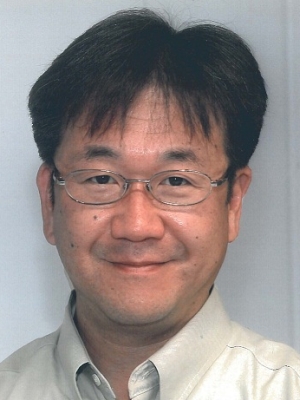Faculty
Hideki Hashimoto
Major research fields
 Photosynthesis, Artificial Photosynthesis, Ultrafast Laser Spectroscopies
Photosynthesis, Artificial Photosynthesis, Ultrafast Laser Spectroscopies
Mankind is facing a major challenge to find new ways of creating clean, renewable fuels. One potentially abundant source of energy is solar radiation. The problem is how to harness such an abundant yet diffuse source of energy. Photosynthesis has evolved mechanisms to achieve this. Any proposed strategies that set out to mimic this process in order to make solar fuels must begin with a light-harvesting or light-concentration step. Photosynthetic antenna complexes are organized on the nano-scale and a major question is how to translate this information into the design of meso- to macro-scale light-harvesting devices. Our research group is faithfully challenging this issue to reveal how photosynthesis achieves ‘Solar to Fuels’ conversion. Recent progress on understating the molecular details of the key reactions in the photosynthetic process has been remarkable. In our research group photosynthetic pigment-protein complexes whose structures are modified are organized into lipid bilayer systems or onto electrodes in order to fabricate artificial photosynthetic membranes. These samples are subjected to the analyses using ultrafast time-resolved coherent spectroscopy as well as time-resolved microscopic spectroscopy in order to make feasible the real time observation of excitation energy transfer in these membranes. Determination of the phonon properties of these samples in broad spectral range is also performed. Based on all these investigations comprehensive understandings of the mechanisms of the excitation energy-transfer in the primary process of photosynthesis will be achieved. At the same time the way of utilization of photosynthetic systems as bio-nanodevices will be postulated. The expected outcomes are to establish guiding principles that lead the fundamental science and technology in the field of bio-nanotechnology of the 21st century. Therefore, we truly believe that we are now at the stage where it is realistic to start to use this ‘biological blueprint’ to begin to construct devices that have the capability to mimic the key steps in the natural process. This is one of the grand scientific challenges of our time.
Major relevant publications
- H. Hashimoto and C. Uragami, “Artificial Photosynthesis Producing Solar Fuels: Natural Tactics of Photosynthesis” in From Molecules to Materials - Pathways to Artificial Photosynthesis, eds. E. Rhoskova and K. Ariga, Springer (2015) (estimated publication date: February 2-15).
- H. Hashimoto, M. Sugisaki and M. Yoshizawa: "Ultrafast time-resolved vibrational spectroscopies of carotenoids in photosynthesis," Biochim. Biophys. Acta, Bioenergetics, 1847 (2015) 69-78. [10.1016/j.bbabio.2014.09.001]
- D. Kosumi, S. Maruta, T. Horibe, R. Fujii, M. Sugisaki, R.J. Cogdell and H. Hashimoto: "Ultrafast Energy-Transfer Pathway in a Purple-Bacterial Photosynthetic Core Antenna, as Revealed by Femtosecond Time-Resolved Spectroscopy," Angew. Chem. Int. Ed., 50 (2011) 1097-1100. [DOI: 10.1002/anie.201003771]
- A.W. Roszak, K. McKendrick, A.T. Gardiner, I.A. Mitchell, N.W. Isaacs, R.J. Cogdell, H. Hashimoto and H.A. Frank: "Protein regulation of carotenoid binding: Gatekeeper and locking amino acid residues in reaction centers of Rhodobacter sphaeroides," Structure, 12 (2004) 765-773. [10.1016/j.str.2004.02.037]
- G. Cerullo, D. Polli, G. Lanzani, S. De Silvestri, H. Hashimoto and R.J. Cogdell: "Photosynthetic light harvesting by carotenoids: Detection of an intermediate excited state," Science, 298 (2002) 2395-2398.



